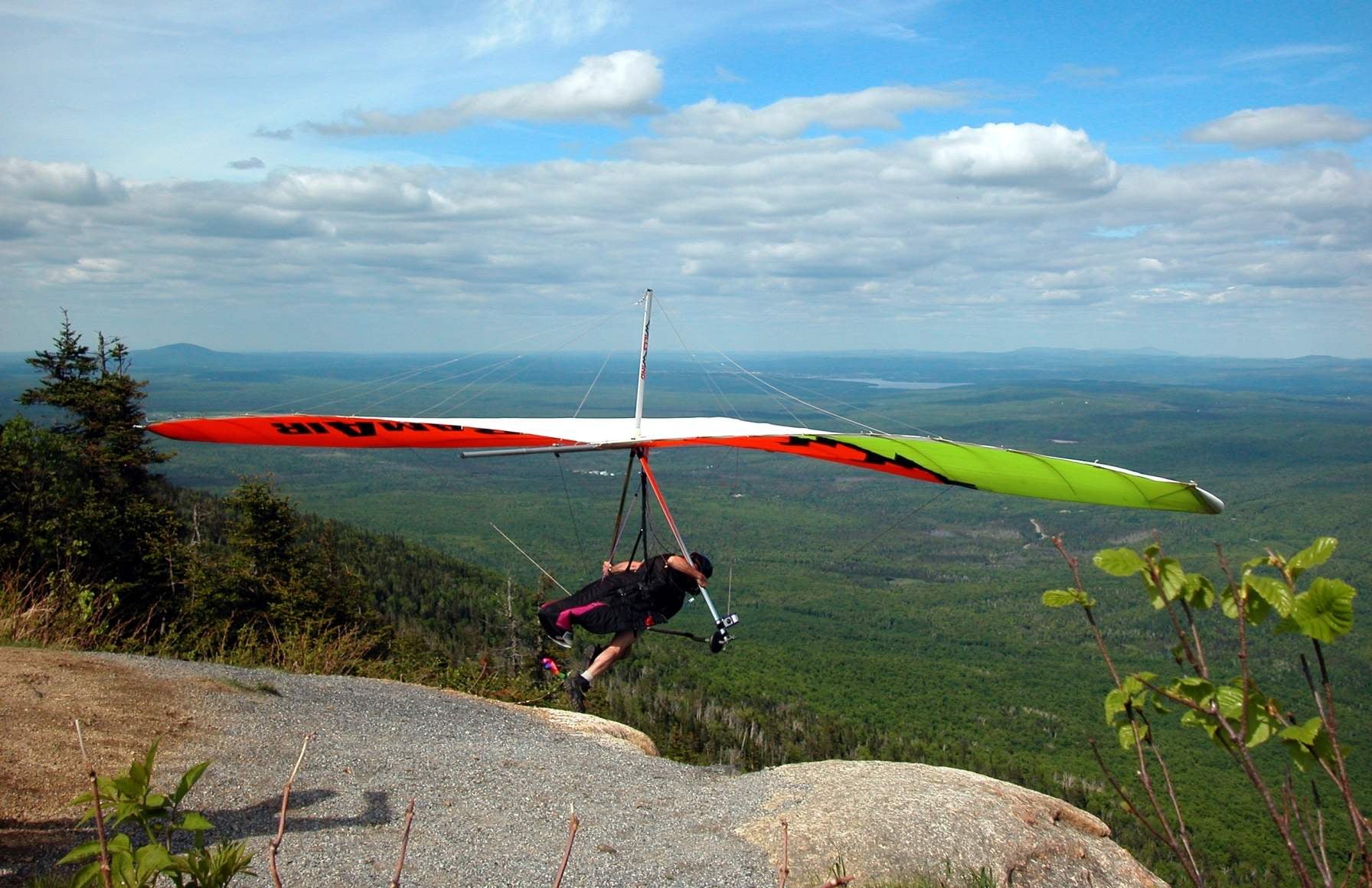 Boomerang and the figure prepared to jump a kangaroo has long been a symbol of Australia. But times change, and now on the sixth continent is much more common to see floating in the sky the glider, rather than a boomerang or frolicking on the green lawn, the kangaroo.
Boomerang and the figure prepared to jump a kangaroo has long been a symbol of Australia. But times change, and now on the sixth continent is much more common to see floating in the sky the glider, rather than a boomerang or frolicking on the green lawn, the kangaroo.
Yes, times change, and hang gliding in Australia has become the most popular sport and active recreation is very broad layers of the population. On hang gliding enjoys not only youth, but children and people are very respectable (up to 70 years!) age.
One of the main reasons for this Hobbies are particularly favorable conditions for flights of almost the whole coast of Australia. Smooth and a strong wind blowing in from the ocean, forms a stable updrafts from the coastal dunes, and these threads are able to keep air in the lungs hang gliders indefinitely long time. “Walking” the flight continued for several hours, here is no surprise. “I thought — said returned recently from Australia famous Soviet glider pilot, master of sports M. B. Gokhberg, that for Australians, the main thing — to have time to scramble to your device! And he takes off in every sense of the word!”
M. B. Gokhberg, gave a presentation about his trip to Australia for the meeting of the Moscow hang-gliders.
Australian gliders, the total amount of which exceeded 100 thousand, United in several national clubs, leading a very intense training and sports activities and enjoys great popularity not only at home but also abroad. A lot of gliders coming in to Australia from other countries for training and establishing national records. (My stay in Australia coincided with, for example, visit the American athlete dick Poynter, brother of the President of the world Association of gliders Given pointer.)

Fig. 1. Diagram of the dynamic upward flow on the ocean. After the start and set desired height, the pilot of the hang glider begins to fly along the slope and the area of the most intense lifting (position B), slightly averting her glider in the direction opposite to the silon to fend off demolition. This is called lead angles. The value of the angle depends on the strength and direction of the wind.
Australian clubs hang gliders are widely used for teaching and training tow flights for the boat, but not on a water ski, as is done in Europe and from the beach (start with a running start). Typing in tow required altitude, the gliders unhooked and moving into the area of dynamic updrafts where and continue the flight. Technique of bathing in these streams mastered them very well. It is possible to note two basic maneuver that they use: walking along the slope of the “hook” turns in an external (from the slope) the direction by 180° and set the height with a continuous spiral in one place, where the upward flow is particularly intense. Most often they use such spiral over the terrain (“pockets”) or plots of land, is strongly heated by the sun; in other words, they already know how to use along with also the dynamic and thermal updrafts. Features of the glider allow you to execute a continuous spiral with a very small radius, without departing from the scope of the camera! In these cases, the impression is that the glider is in place. But, a closer look carefully, you notice that the pilot skillfully maneuvers: slightly stretching the spiral against the wind and thus eliminating demolition. The development of soaring flight undoubtedly contributed to the presence of commercially required of small flight instruments (especially) all of variometers and pointer speed). A compact instrument unit for the Australian gliders, as well as receiving and transmitting radio — the usual stuff. Themselves hang gliders used by Australian athletes are extremely diverse in design. They come by different firms from many countries. Interesting detail: only in England Australian trading companies purchased in 1976 half a million gliders! Many of them are experimental devices. The major thrust of the experiments is to improve aerodynamic characteristics, stability and controllability of the glider. Great attention is paid to fabrication of the cloth (or synthetic), which is sewn to the canopy. Most apparatus the surface of this material is brought to a mirror Shine, and in flight it is not produced any — even the smallest of wrinkles or “waves”; but there are materials, the surface of which is slightly fuzzy and reminiscent of the finest velvet, like the wing of a bat.

Fig. 2. Diagram of soaring flight in dynamic drip flow. Depending on the configuration of the slope the route can range from 200-300 m up to several kilometers. U-turns at the end of the route are, us a rule, in the direction “of the slope” and stretched against the wind”to neutralize the demolition.

Fig. 3. The most typical features of the gliders used by the Australian” athletes And keeled, the surface created by vertical panels on the spinal tube (the cloth is sewn to the dome); B— plane of the keel, mounted on special frames at the top or bottom of the spinal tube; In a characteristic shape in plan.
Which is better — hard to say, since all these devices are, oddly enough, fly about the same, and the success of a flight depends primarily on the skill of the athlete. To enhance directional and lateral stability, widely used additional plane, soft and hard, resembling the wing keel washers or plates tailless gliders. Found even machines with V-tail (like Rudnickaja) and washers Whitcomb on the wing tips. Geometry to the size of the most common in Australia hang gliders depicted in figure 3.

